Exhibition dates: 10th June – 10th September 2022
Paul Trevor (British, b. 1947)
Hyde Park, London W2, 14 May 1978. Altab Ali’s coffin departs for Downing Street
1978
Gelatin silver print
© Paul Trevor
1977-1978 were tumultuous years in Britain. In 1977 Queen Elizabeth II celebrated her Silver Jubilee but the disaffection and alienation of large sections of society were evidenced in the numerous riots, strikes and protests that spread across the country. There were many “youth cultural movements in the late 1970s in the UK – namely skinheads, punks, and soulboys – along with the social, political, and cultural tensions between them.” Racism and homophobia were rife in both West Indian and white British communities.
Punk ruled the airwaves and the streets, the “Yorkshire Ripper” was running amok and undertakers went on strike in London, leaving more than 800 corpses unburied. “On 7 June, Sex Pistols manager Malcolm McLaren and the record label Virgin arranged to charter a private boat and have the Sex Pistols perform while sailing down the River Thames, passing Westminster Pier and the Houses of Parliament. The event, a mockery of the Queen’s river procession planned for two days later, ended in chaos. Police launches forced the boat to dock, and constabulary surrounded the gangplanks at the pier. While the band members and their equipment were hustled down a side stairwell, McLaren, Vivienne Westwood, and many of the band’s entourage were arrested.”1
On the 13th August 1977, the Battle of Lewisham took place took place, “when 500 members of the far-right National Front (NF) attempted to march from New Cross to Lewisham in southeast London and various counter-demonstrations by approximately 4,000 people led to violent clashes between the two groups and between the anti-NF demonstrators and police.”1 On the 30th January 1978, then opposition leader Margaret Thatcher says that many Britons fear being “swamped by people with a different culture”.
And on the 4th May 24-year-old Bengali leather garments worker Altab Ali is murdered in East London in a racially motivated attack which mobilises the British Bangladeshi community to protest. These photographs pay tribute to the activists who mobilised around the rallying cry of justice that followed.
Socio-documentary photographers like Paul Trevor are vital in recording the roiling emotions and feelings of people during periods of great stress, protest and change. What is striking about his documentary photographs of the local Bengali community’s mobilisation against racist violence and institutional police racism is their power and directness – the grim determination of the people and their anger against what was and had been happening to them for a very long time comes across in the photographs with visceral force, perhaps even their anger against being photographed as well. The looks of defiance aimed at the camera lens is an act of defiance toward racism itself – no more they are saying. Never again!
We can see it in they eyes of the elderly gentleman in shirt and tie (with the protective, open hand across his chest) and the women at right in the photograph Adler Street, London E1, 14 May 1978. The start of the march behind Altab Ali’s coffin from Whitechapel to Hyde Park, organised by the Action Committee Against Racial Attack (ACARA) (1978, above); we can observe it in the stare of the man underneath the placard at left in the photograph Hyde Park, London W2, 14 May 1978. Rally following the march behind Altab Ali’s coffin from Whitechapel, organised by the Action Committee Against Racial Attacks (ACARA) (1978, below); and we can feel it in the gaze of the man at right in the photograph Leadenhall Street, London, 14 May 1978. Thousands of Bengalis follow the coffin of Altab Ali from Whitechapel to Hyde Park, organised by the Action Committee Against Racial Attacks (ACARA) (1978, below). We can feel the emotion, outrage, and passion in all of these photographs. We are human beings and we don’t deserve to be treated like animals…
Today, arm in arm, we still need to march to protect our freedoms and rights as human beings. And we still need photographs to document our resistance toward right wing ideology, discrimination and racism. Which reminds me – in the recent Commonwealth Games, “In 35 out of the 56 Commonwealth nations homosexuality is considered a crime, with some countries still punishing it with the death penalty… Seven Commonwealth nations have a maximum penalty of life imprisonment for being gay.”3 Still this, in the 21st century. It’s barbaric. And none of this hiding behind the cloak of religion and religious dogma … for religion is just a salve to the conscience of the unconscionable.
Brothers, we need to protest against discrimination and racism of any form around the world.
Dr Marcus Bunyan
1/ Anonymous. “Silver Jubilee of Elizabeth II,” on the Wikipedia website Nd [Online] Cited 21/08/2022
2/ Anonymous. “Battle of Lewisham,” on the Wikipedia website Nd [Online] Cited 21/08/2022
3/ Benjamin Butterworth. “Commonwealth Games 2022: Tom Daley and protesters criticise anti-gay laws in 35 Commonwealth countries,” on the iNews website, July 28, 2022 [Online] Cited 21/08/2022
Many thankx to Four Corners for allowing me to publish the photographs in the posting. Please click on the photographs for a larger version of the image.
“I refuse to accept the view that mankind is so tragically bound to the starless midnight of racism and war that the bright daybreak of peace and brotherhood can never become a reality… I believe that unarmed truth and unconditional love will have the final word.”
Martin Luther King Jr.
“Tolerance, inter-cultural dialogue and respect for diversity are more essential than ever in a world where peoples are becoming more and more closely interconnected.”
Kofi Annan
“In a racist society, it is not enough to be non-racist. We must be anti-racist.”
Angela Davis
“Freedom is never given; it is won.”
A. Philip Randolph
On display at Four Corners: an exhibition of photographs by Paul Trevor, celebrating east London’s Bengali activists of 1978.
This exhibition reveals the dramatic events which were sparked by the racist murder of Altab Ali, a 24-year-old Bengali leather garments worker, and pays tribute to the activists who mobilised around the rallying cry of justice that followed.
Local East End photographer Paul Trevor documented how members of the local Bengali community endured racial abuse as a constant factor of everyday life, and the moment at which they mobilised against racist violence and institutional police racism. The exhibition brings together 75 of Trevor’s photographs for the first time, alongside oral history recordings by original activists.
The show marks the culmination of a major heritage project led by Four Corners and Swadhinata Trust, in partnership with Paul Trevor. With the help of volunteers and original activists, the project is creating a record of this watershed moment as told by local people. The exhibition, alongside project oral history interviews, short films and podcasts, will be available as a touring show, and will be lodged at the Bishopsgate Institute Archives.
Text from the Four Corners website
Altab Ali Day is held each year on 4 May. It commemorates the racist murder of a young Bengali man in 1978 and the transformative events that followed. East London’s Bengali community mobilised with mass demonstrations, meetings and sit-down protests. Their actions were a turning point in resistance against racism and discrimination in Britain.
Photographer Paul Trevor captured the dramatic events of that year. Guided by these photographs, Four Corners and Swadhinata Trust are working with local volunteers to record the memories of people involved at the time, creating a vital record of this watershed moment.
Paul Trevor (British, b. 1947)
Adler Street, London E1, 14 May 1978. The start of the march behind Altab Ali’s coffin from Whitechapel to Hyde Park, organised by the Action Committee Against Racial Attack (ACARA)
1978
Gelatin silver print
© Paul Trevor
“On the week after that murder had taken place, maybe … six or 7,000 people, all different backgrounds, came to the park. And we walked behind his coffin in a black… van… We walked to Downing Street to protest and appeal for help. That was an extraordinary gathering of people from different backgrounds, from the mosque, from the churches, all sorts of people, different politics, Anti-Nazi League then joined us, but it was done at no notice, very just quickly from the heart. And it was yes, an important turning point I think.”
Dan Jones
“It was cold and wet and horrible, and a lot of people went home before we left Altab Ali Park as it is now… it was you know predominantly Bangladeshis that went, a lot of the men who’d normally be working but would have Sunday off were on it. It was quite remarkable like that… there was a great sense of solidarity in that.”
Claire Murphy
Paul Trevor (British, b. 1947)
Hyde Park, London W2, 14 May 1978. Rally following the march behind Altab Ali’s coffin from Whitechapel, organised by the Action Committee Against Racial Attacks (ACARA)
1978
Gelatin silver print
© Paul Trevor
Paul Trevor (British, b. 1947)
Downing Street, London SW1, 14 May 1978. Bengali delegation outside No 10 after delivering Petition
1978
Gelatin silver print
© Paul Trevor
The hard facts about the resistance movement of the 1970s in East London are that different umbrella organisations at different periods of time were formed to mount the resistance movement in the 1970s in East London. It was never ever a national organisation and certainly not an individual, but the local community groups who mobilised the Bangladeshi community to mount the resistance movement. When the community was under attack by the far-right National Front (NF), we looked to the authority to protect us from the vicious racist attacks. However, the police turned a blind eye to the situation. Various local Bangladeshi organisations and the anti-racist individuals felt the necessity of forming an umbrella organisation to protect the community from racist attacks. The first such umbrella organisation was the ‘Anti Racist Committee of Asians in East London’ (ARCAEL). The ARCAEL organised a mass meeting at the Naaz cinema Hall in the middle of Brick Lane on 12th June 1976 and convinced the Bangladeshi community that we could not rely on the authorities to protect us and we had to fight back and defend ourselves. ARCAEL organised vigilante groups and confronted the NF thugs who would run their stall at the corner of Bethnal Green Road and Brick Lane every Sunday to sell their filthy propaganda literature and to recruit new members. The police took notice of these confrontations. However, this resulted in increasing numbers of arrests of the Asians. At one point the police told us that whichever group went to the spot first would be allowed to have their presence. We started mobilising ourselves early in the morning and the NF tried to be there before us. We then decided to start gathering at the corner of Brick Lane and Bethnal Green Road on Saturday evenings and kept on occupying the spot overnight.
It was the entire community under the leadership of ARCAEL engineered the resistance movement in East London in the 1970s.
After Altab Ali was brutally murdered on 4th May 1978, the Bangladeshi community vowed to stamp out racist attacks once and for all. We took to the street and we shouted slogans, “Enough is Enough” “Come What May, We Are Here to Stay.” “Here to Stay, Here to Fight” “Black and White Unite and Fight”. Immediately, after the death of Altab Ali, another umbrella organisation, “Action Committee Against Racial Attacks” (ACARA), was formed for the specific purpose of organising a national demonstration. In just 10 days preparation, ACARA successfully organised a National Demonstration to highlight the lack of police action to protect the victims of racial attacks in East London. We marched from Brick Lane to Hyde Park for a rally and then went to Downing Street to give a petition to the Prime Minister demanding a full investigation into the police handling of racist attacks in East London and more protection of immigrants. The petition was given by the chair of the ACARA, Mr Taibur Rahman who was accompanied by the General Secretary, Jamal Hasan and five other committee members, namely Shiraz Uddin, Shoeb Chowdhury, Gulam Mustafa, Akikur Rahman and Zia Uddin Lala.
One can see the news coverage with a photograph in front of 10 Downing Street in the East London Advertiser, dated 19th May 1978. This is available in the Tower Hamlets Local History Library and Archives, 277 Bancroft Rd, London E1 4DQ (near the Queen Mary University). Two days before the national demonstration, ACARA issued a press release which appeared in the East London Advertiser on 12 May 1978, “… In a joint statement, committee members Taibur Rahman, Jamal Hasan and Shiraz Uddin told the Advertiser: ‘This march condemns the death of Altab Ali. It has been called to publicise what is happening to Asians in East London so that everyone can learn of the attacks which make us daily victims…'”
From these two newspaper articles, it is obvious that it was the umbrella organisation ACARA which mobilised the community and organised the national demonstration. There were a few more umbrella organisations since 1978. Hackney and Tower Hamlets Defence Committee was another important umbrella organisation which organised a one day strike by the Asian and black workers in East London and had a sit-in protest in front of the Bethnal Green Police station demanding the release of some of our members who were arrested in the demonstration. The police had to give in to our demand and released the three of our members arrested earlier.
Jamal Hasan. “The big lie,” on the Altab Ali Foundation website May 2019 [Online] Cited 05/08/2022
Paul Trevor (British, b. 1947)
Leadenhall Street, London, 14 May 1978. Thousands of Bengalis follow the coffin of Altab Ali from Whitechapel to Hyde Park, organised by the Action Committee Against Racial Attacks (ACARA)
1978
Gelatin silver print
© Paul Trevor
Exhibition reveals a dramatic struggle for justice in east London A major exhibition of photographs by Paul Trevor documents a dramatic struggle for justice.
Following the racist murder of Altab Ali in May 1978, east London’s young Bengali community took to the streets in protest. Four Corners’ new exhibition, Brick Lane 1978: The Turning Point, brings together seventy of Paul Trevor’s images alongside accounts of pioneering activists, to produce a powerful narrative of the time.
The show marks the culmination of a major heritage project led by Four Corners and Swadhinata Trust with a dedicated group of volunteers, and who have interviewed many people involved in these momentous events. The exhibition pays tribute to a generation whose actions changed the course of civil rights in the UK.
Julie Begum, Chair of Swadhinata Trust, said, “It is important to commemorate Altab Ali Day to remember the racist violence the Bengali community faced in the East End of London, and to celebrate the community’s united defence to defeat the evils of racism.” Paul Trevor said: “They say a photo is worth a thousand words. But sometimes, as in this case, words are essential. This project is an opportunity to add the voices of those who made history to the images of that story.” Carla Mitchell, Artistic Development Director at Four Corners said: “This history is highly relevant today, with an increase of racist attacks and violence making the headlines. Thanks to National Lottery players we will be able to ensure that this powerful heritage is made publicly accessible for a wide audience of current & future generations.”
Historical background
1978 began with opposition leader Margaret Thatcher on ‘World in Action’ television programme saying that many Britons feared being “rather swamped by people with a different culture.” Her comments were seen as a direct appeal to would-be National Front voters in working class neighbourhoods. Racist violence was endemic in east London, and particularly around Brick Lane recently arrived Bengali migrants worked in the local rag trade, as had the Jews before them.
The National Front’s newspaper pitch at Brick Lane’s Sunday morning market attracted skinheads who harassed the local Bengali community. They were a target for far-right groups, who wrongly blamed them for high unemployment and bad housing. East London has always been a haven for migrants, from the French Huguenots fleeing 17th century religious persecution, to the Irish poor of the 19th century, and Jews escaping Cossack pogroms in Russia and Poland. It also has an equally long history of racist violence and resistance to it. Oswald Mosley’s British Union of Fascists tried to march east to the docks in 1936, but were stopped by Jews, Irish dockers and communists in the famous ‘Battle of Cable Street’.
Altab Ali’s murder on the night of the May 1978 local elections in which 41 National Front candidates stood, marked a turning point for the Bengali community. 7,000 people marched behind his coffin to a rally in Hyde Park, then to Downing Street where they handed in a petition demanding police protection. That year young Bengali people mobilised in a community-led, anti-racist struggle which brought about a radical social transformation both locally and far beyond.
Anti-racist protests against the electoral threat of the far right National Front party were supported by a grass-roots, multi-cultural movement – Rock against Racism – which held open-air concerts in nearby Victoria Park, headlined by The Clash, Steel Pulse and Tom Robinson. Community protest and music radicalised a generation, and helped destroy National Front support.
Local photographer Paul Trevor documented the dramatic events of the era in over 400 photographs, many of which will be on show for the first time in this exhibition. His photographs show how the local Bengali community endured racial abuse as a constant factor of everyday life, and how they united to end violence and institutional racism. Trevor was also a member of the Half Moon Photography Workshop collective, whose work focused on socially-committed photography. Some of his images were covered in their Camerawork magazine: Exhibition Poster for Brick Lane 1978 A Community Under Attack; Review of the exhibition Brick Lane 1978. A community under attack.
By the end of 1978, the National Front was forced to leave its headquarters near Brick Lane, though far-right racist attacks in east London persisted into the 1990s. To this day the name Altab Ali remains linked with the struggle against racism and for human rights in London’s East End.
Press release from Four Corners, London
Paul Trevor
Trevor was born in London (b. 1947) and grew up on a kibbutz in Israel. He studied at the National Film & Television School, and was a founder member of Camerawork, the UK’s first radical photo magazine. In 1973, together with the photographers Chris Steele-Perkins and Nicholas Battye, he formed the Exit Photography Group. Their largest project, Survival Programmes documented life in the inner cities, both in photographs and recorded interviews over a period of six years. Works from the project were shown at the Side Gallery, Newcastle in 1982 and brought together in a book; the photographs here are drawn from this project. The works were as much about documenting the squalor of the inner cities, as they were about recording the process of poverty – inadequate housing, unemployment, overcrowding, illness and old age. The Exit archive is now housed and administered by the LSE.
Paul Trevor (British, b. 1947)
New Road, London E1, June 1976. Demonstration organised by ARCAEL (Anti Racist Committee of Asians in East London)
Left: Chomok Ali Noor. Centre: Mala Sen
1976
Gelatin silver print
© Paul Trevor
“… the Bangladeshi workers who used to work in sweatshops by and large in the East End, experienced a lot of what they called Paki bashing… People would just for fun… they would beat isolated people walking on the streets.”
“And there was of course, the death of Altab Ali which caused the huge huge meeting, which of course we went to the community centre and we said we ought to call a protest and get the government to see that this stops because the police are not paying any attention… So from the Altab Ali meeting from the meeting of Anti-Racist Committee of Asians in East London, we called it ARCAEL… huge meeting in a cinema in Brick Lane. And when we called the meeting, we thought we’d get you know fifty people – thousands of people turned up, the cinema was full, and the entire Brick Lane was packed with people listening through loudspeakers outside… and the emotion poured out, the determination to do something poured out.”
Farrukh Dhondy
Paul Trevor (British, b. 1947)
Whitechapel Road, London E1, June 1976. Demonstration organised by ARCAEL (Anti Racist Committee of Asians in East London)
1976
Gelatin silver print
© Paul Trevor
The banner at left refers to Enoch Powell (British, 1912-1998), “politician, classical scholar, author, linguist, soldier, philologist, and poet. He served as a Conservative Member of Parliament (1950-1974) and was Minister of Health (1960-1963) then Ulster Unionist Party (UUP) MP (1974-1987)…
Powell attracted widespread attention for his “Rivers of Blood” speech, delivered on 20 April 1968 to the General Meeting of the West Midlands Area Conservative Political Centre. In it, Powell criticised the rates of immigration into the UK, especially from the New Commonwealth, and opposed the anti-discrimination legislation Race Relations Bill. The speech drew sharp criticism from Powell’s own party members and the press, and Conservative Party leader Edward Heath removed Powell from his position as Shadow Defence Secretary…
Polls in the 1960s and 1970s showed that Powell’s views were popular among the British population at the time.[35] A Gallup poll, for example, showed that 75% of the population were sympathetic to Powell’s views. An NOP poll showed that approximately 75% of the British population agreed with Powell’s demand for non-white immigration to be halted completely, and about 60% agreed with his call for the repatriation of non-whites already resident in Britain.
The Rivers of Blood speech has been blamed for leading to violent attacks against British Pakistanis and other British Asians, which became frequent after the speech in 1968; however, there is “little agreement on the extent to which Powell was responsible for racial attacks”. These “Paki-bashing” attacks later peaked during the 1970s and 1980s.
Powell was mentioned in early versions of the 1969 song “Get Back” by the Beatles. This early version of the song, known as the “No Pakistanis” version, parodied the anti-immigrant views of Enoch Powell.
On 5 August 1976, Eric Clapton provoked an uproar and lingering controversy when he spoke out against increasing immigration during a concert in Birmingham. Visibly intoxicated, Clapton voiced his support of the controversial speech, and announced on stage that Britain was in danger of becoming a “black colony”. Among other things, Clapton said “Keep Britain white!” which was at the time a National Front (NF) slogan.
In November 2010, the actor and comedian Sanjeev Bhaskar recalled the fear which the speech instilled in Britons of Indian origin: “At the end of the 1960s, Enoch Powell was quite a frightening figure to us. He was the one person who represented an enforced ticket out, so we always had suitcases that were ready and packed. My parents held the notion that we may have to leave.”
Whilst a section of the white population appeared to warm to Powell over the speech, the author Mike Phillips recalls that it legitimised hostility, and even violence, towards black Britons like himself.
In his book The British Dream (2013), David Goodhart claims that Powell’s speech in effect “put back by more than a generation a robust debate about the successes and failures of immigration”.
“Just when a discussion should have been starting about integration, racial justice, and distinguishing the reasonable from the racist complaints of the white people whose communities were being transformed, he polarised the argument and closed it down.”
Text from the “Enoch Powell” and “Rivers of Blood speech,” on the Wikipedia website
Paul Trevor (British, b. 1947)
Outside police station, Bethnal Green Road, London E2, 17 July 1978. Sit down protest
Bengali Youth Movement Against Racism sit-down protest outside Bethnal Green Police Station, 17 July 1978
1978
Gelatin silver print
© Paul Trevor
“I thought Britain would love us. But in fact it was the opposite, they hated us. So the reason I never had my childhood teenage I was frightened. I was living in fear. We never had a place to go to apart from Brick Lane.”
“… people got beaten up in streets, people used to get mugged… after work coming home by racists. Then we came into the realisation that we… have to fight back. Then all some of the young teenager we named we set up an organisation called Bangladesh Youth Front.”
“… 1978, I was 18 or 19 at the time… Then I came to know the name of Altab Ali… We organised a demonstration to march from Whitechapel St Mary’s Churchyard to Hyde Park Corner… And that was the day gave us the strength after seeing all these people supported us. All these people was chanting. ‘Here to stay. We are here, here to stay’… and there was… slogans saying ‘black and white, unite and fight. We are black, we are white, we are united.'”
Rafique Ullah
Paul Trevor (British, b. 1947)
Brick Lane, London E1, 17 July 1978. Bangladesh Youth Movement Against racism march
1978
Gelatin silver print
© Paul Trevor
Paul Trevor (British, b. 1947)
Curtain Road, London EC2, 20 August 1978. Hackney & Tower Hamlets Defence Committee & ANL (Anti Nazi League) march
Left to right: Syed Mizan, Jamal Miah, Abdul Manik
1978
Gelatin silver print
© Paul Trevor
“We wanted to defend our community. We wanted to show the world that Altab Ali was a very simple and innocent garments worker who was murdered by racists for no reason. He was simply working in rag trade, and on his way from work to home he was murdered.”
“We marched from Brick Lane to Hyde Park corner, we marched to House of Commons, we marched to major roads in London protesting the murder of Altab Ali.”
“… there were a huge number of people that needs to be recognised by the community, by the next generation, by the future generations, by the history that you are involved. I think these people need some recognition.”
Syed Mizan
Paul Trevor (British, b. 1947)
Brick Lane, London E1, September 1978
1978
Gelatin silver print
© Paul Trevor
Four Corners
121 Roman Road
Bethnal Green
London E2 0QN
Phone: 020 8981 6111
Gallery hours:
Tuesday to Saturday 11am – 6pm
(8pm on Thursdays)



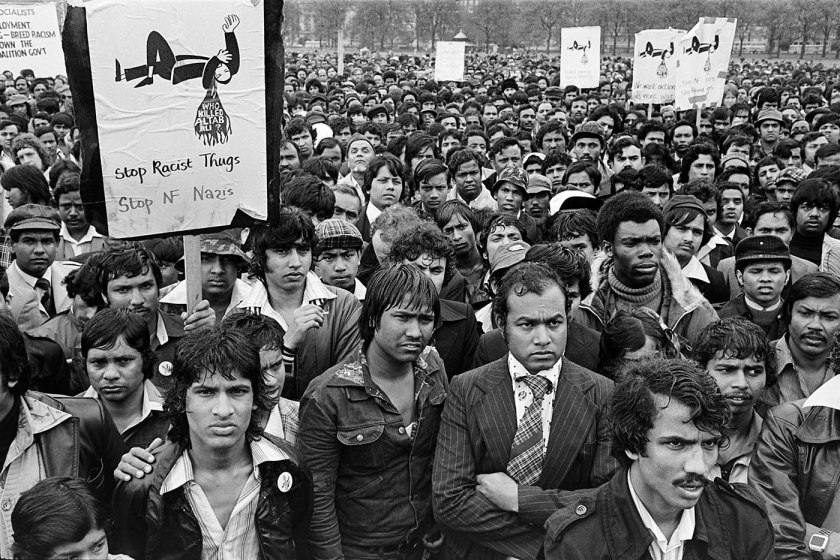
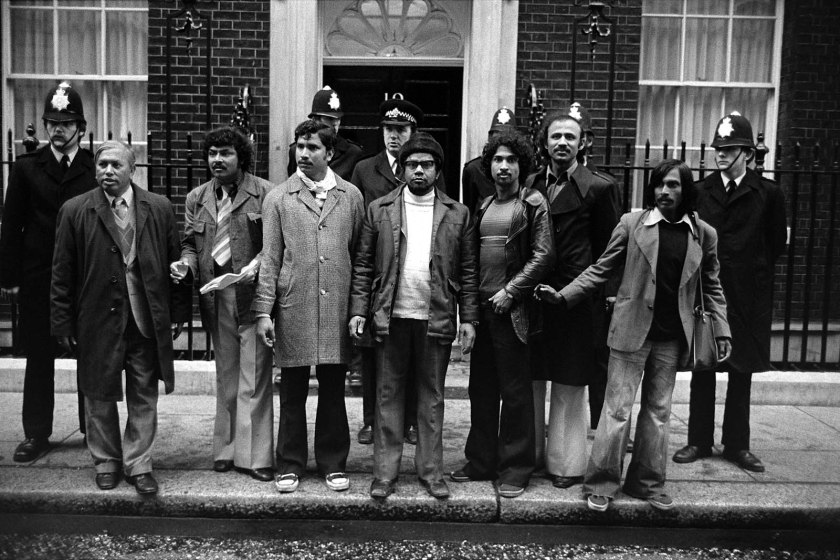
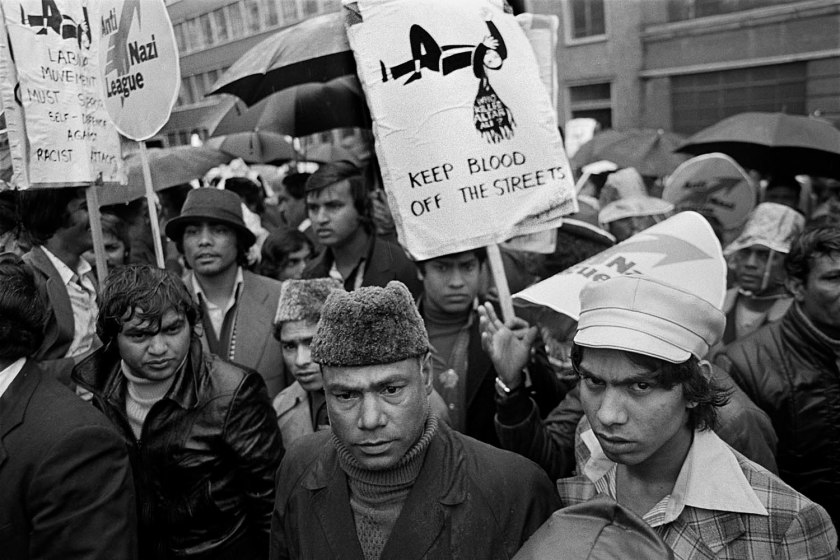
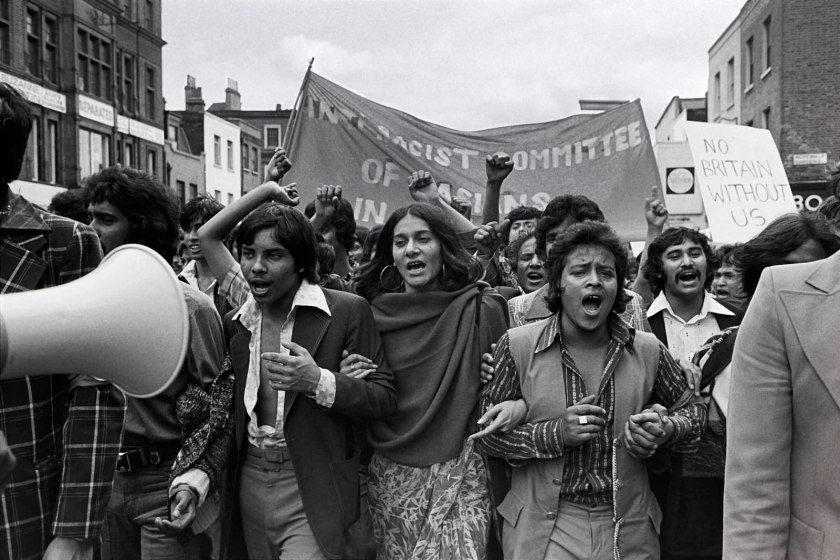
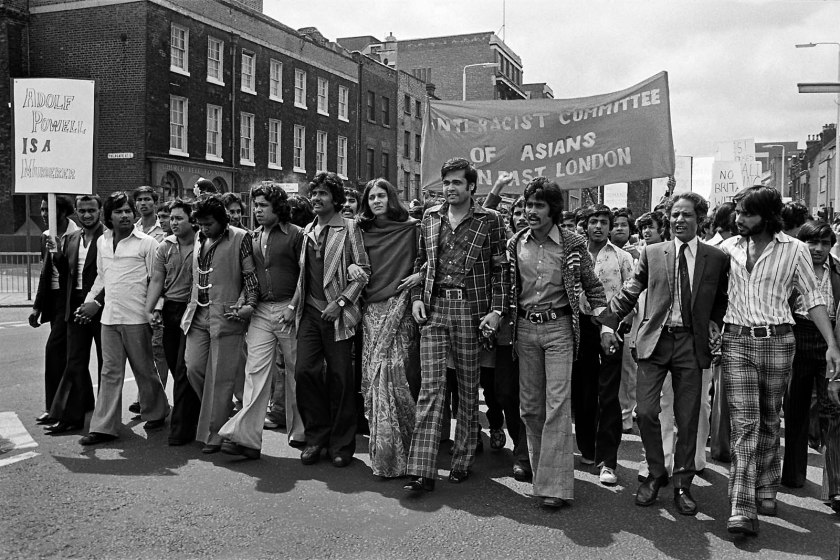


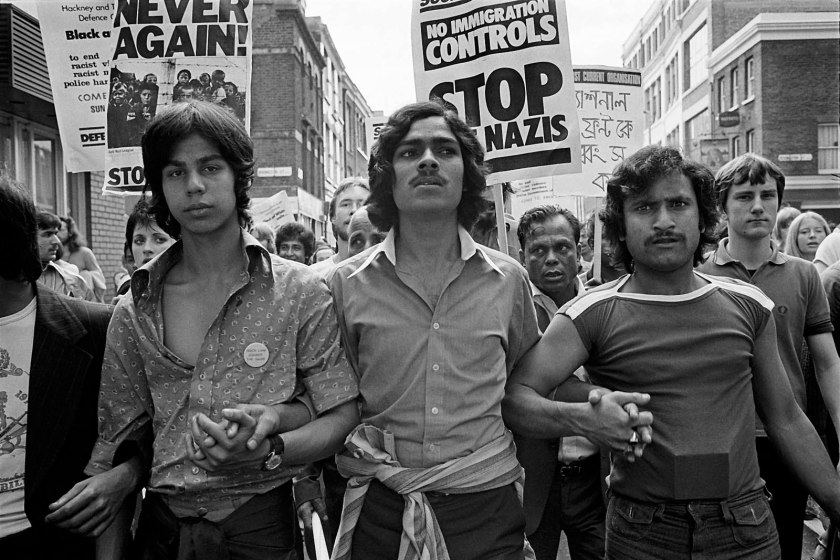














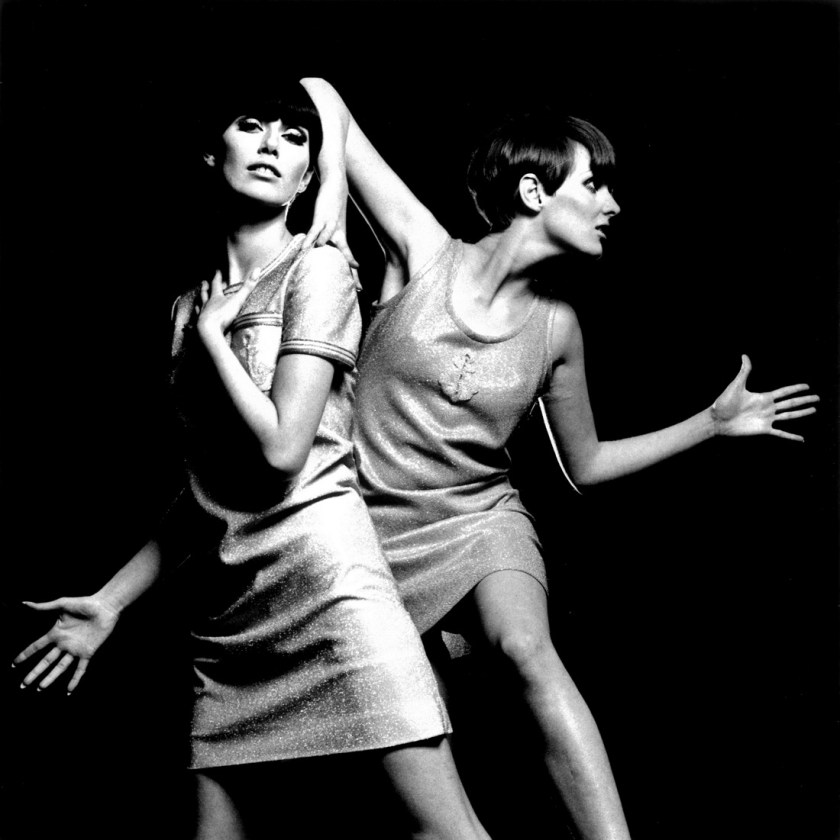



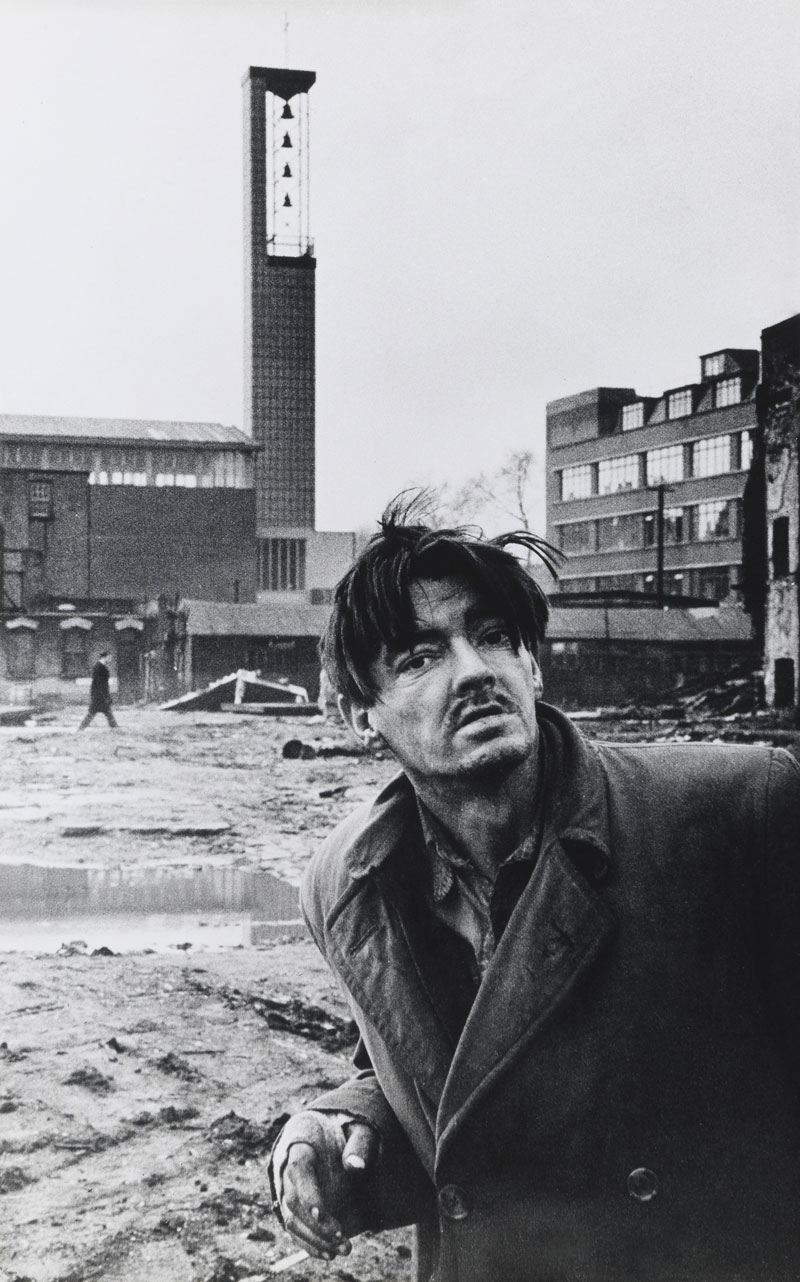




You must be logged in to post a comment.